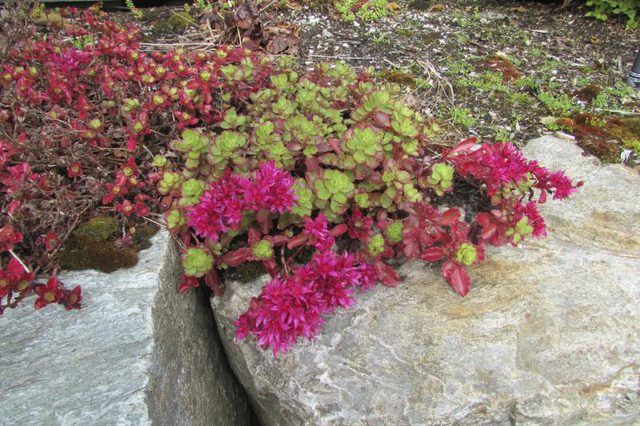Bulbs
Flower Basics
Flower Beds & Specialty Gardens
Flower Garden
Garden Furniture
Garden Gnomes
Garden Seeds
Garden Sheds
Garden Statues
Garden Tools & Supplies
Gardening Basics
Green & Organic
Groundcovers & Vines
Growing Annuals
Growing Basil
Growing Beans
Growing Berries
Growing Blueberries
Growing Cactus
Growing Corn
Growing Cotton
Growing Edibles
Growing Flowers
Growing Garlic
Growing Grapes
Growing Grass
Growing Herbs
Growing Jasmine
Growing Mint
Growing Mushrooms
Orchids
Growing Peanuts
Growing Perennials
Growing Plants
Growing Rosemary
Growing Roses
Growing Strawberries
Growing Sunflowers
Growing Thyme
Growing Tomatoes
Growing Tulips
Growing Vegetables
Herb Basics
Herb Garden
Indoor Growing
Landscaping Basics
Landscaping Patios
Landscaping Plants
Landscaping Shrubs
Landscaping Trees
Landscaping Walks & Pathways
Lawn Basics
Lawn Maintenance
Lawn Mowers
Lawn Ornaments
Lawn Planting
Lawn Tools
Outdoor Growing
Overall Landscape Planning
Pests, Weeds & Problems
Plant Basics
Rock Garden
Rose Garden
Shrubs
Soil
Specialty Gardens
Trees
Vegetable Garden
Yard Maintenance
How to Plant Creeping Red Sedum
How to Plant Creeping Red Sedum. Plants belonging to the genus *Sedum* are usually called *stonecrops* because they thrive in dry, sandy or rocky soil. Of the several hundred species in the genus, several stand out for their low, creeping habit and their red or rose flowers. Usually easy to grow, they're tough plants that need only some basic care...

Plants belonging to the genus Sedum are usually called stonecrops because they thrive in dry, sandy or rocky soil. Of the several hundred species in the genus, several stand out for their low, creeping habit and their red or rose flowers. Usually easy to grow, they're tough plants that need only some basic care at planting and a bit of aftercare during their first season or two to keep them healthy.
Getting Started
Creeping sedums usually grow about 6 to 12 inches tall, spreading to cover 1 or 2 feet. They're quite hardy and can survive cold winters well. For example, a variety called "Rosy Glow" (Sedum "Rosy Glow") grows in U.S. Department of Agriculture plant hardiness zones 3 through 9, while "Dragon's Blood" (Sedum spurium "Schorbuser Blut") grows in zones 4 through 9. Both produce reddish flowers in summer through fall, and bronze-green leaves on "Dragon's Blood" turn red in fall.
If winters are cold where you live, plant sedum seedlings outdoors in early spring or start them from seed indoors about four weeks before the last frost date, moving them into the garden when weather warms slightly. In areas with warm winters, you could also plant sedum outdoors in early fall to have well-established plants by the following spring.
Setting Out Plants
For best growth, plant creeping red sedum where it gets full sun for most of the day. Most varieties also tolerate partial shade, although you might see less flowering under that condition. Creeping sedum does well in any type of garden soil, including poor, sandy or rocky types, and can grow between rocks where soil is scarce. But this plant requires excellent drainage -- constantly wet or soggy soil can eventually kill it. If the soil contains clay and drains slowly, mix several inches of coarse sand into the planting area.
Set each plant into a hole that keeps it at the same height as it was in its pot. Tamp the soil down well and water the plant thoroughly. Most types of creeping red sedum spread to a width of about 1 foot, so allow 9 to 12 inches of space around each plant.
Giving Some Care
Once it's well-established, creeping red sedum thrives in dry conditions and needs little or no supplemental water. But a newly planted sedum grows best when given some extra water, especially during the first few weeks if little or no rain falls. Aim for about 1/2 to 1 inch of water weekly, including rain, and avoid using organic mulch under this plant because it can retain moisture and cause stems to rot. To use mulch as a weed-preventive, choose a nonorganic type such as pea gravel, which drains quickly.
Creeping sedum needs little or no fertilizer, thriving in poor soil. An application of compost, however, can help new plants off to a good start; work about 2 inches of compost into the soil at planting time and, in future springs, mix a small handful into the soil around the base of each plant, being careful not to disturb roots.
Watching for Problems
A generally pest- and disease-free plant, creeping red sedum might attract slugs or snails. Control these by hand-picking or set commercial traps designed for these pests. You might also see scale insects, which look like dark spots on leaves and stems. These can be hand-picked or sprayed with horticultural oil for a severe problem. Dilute 2 tablespoons of oil per gallon of water, but check your product label for further directions.
Creeping sedums spread by rooting at points where joints on stems -- called nodes -- touch the soil. If a plant spreads aggressively, trim back these creeping stems to control its size, wiping the blade with rubbing alcohol to prevent spreading disease. Plant these rooted stems elsewhere to start a new sedum patch.